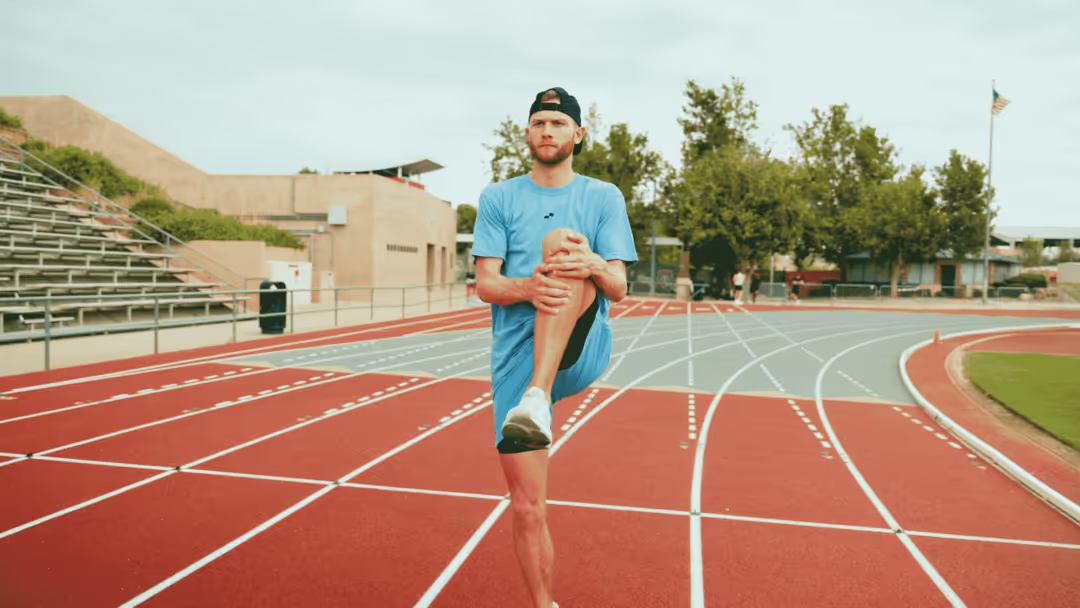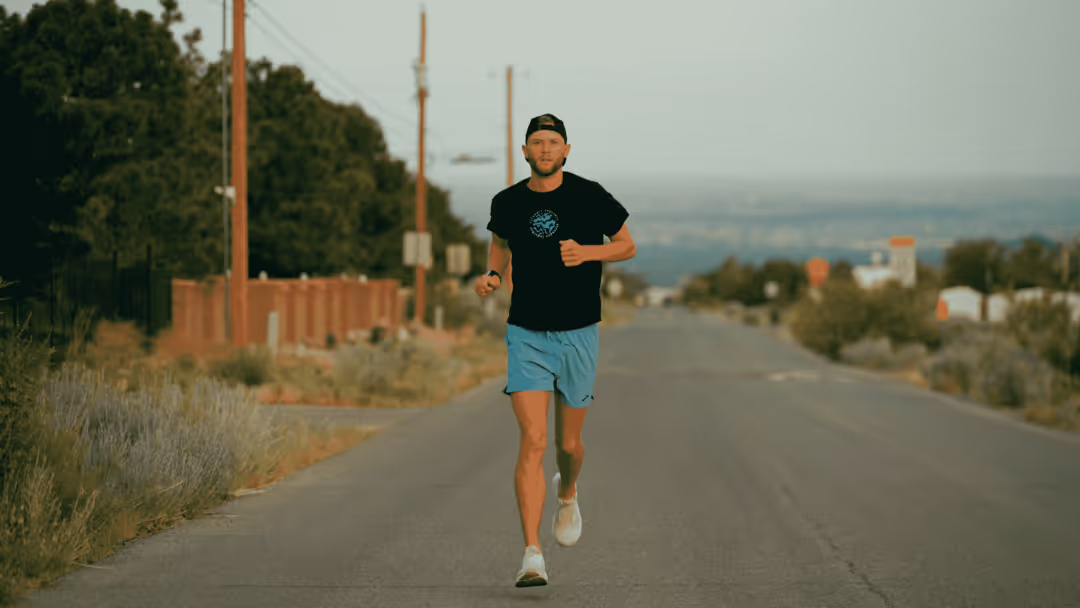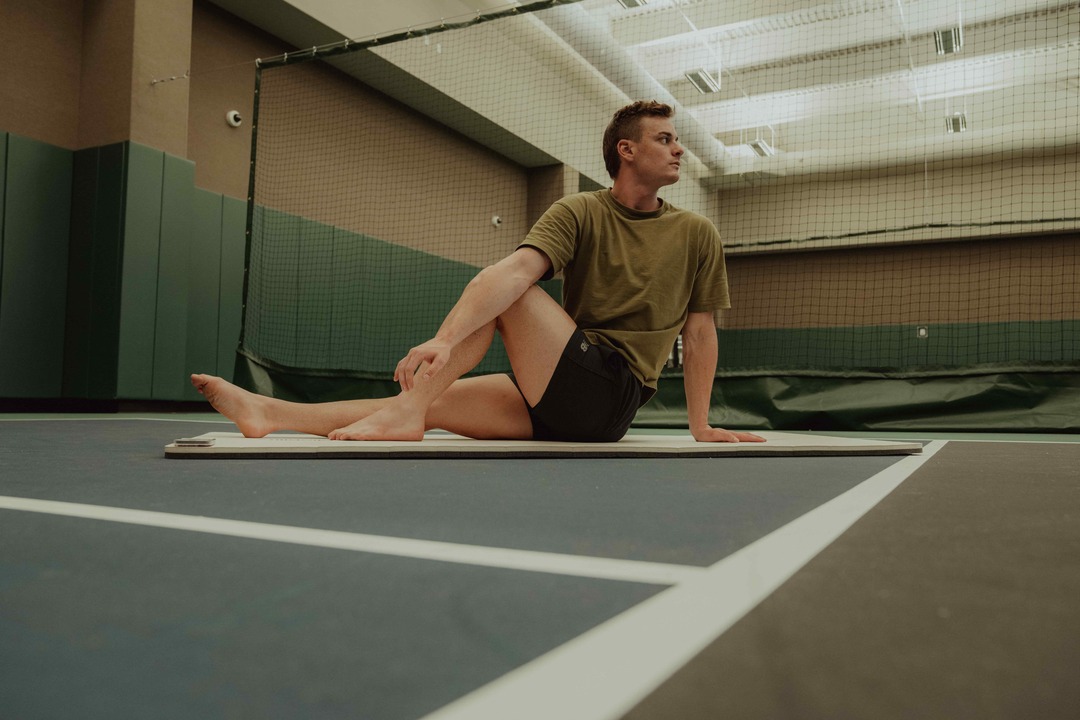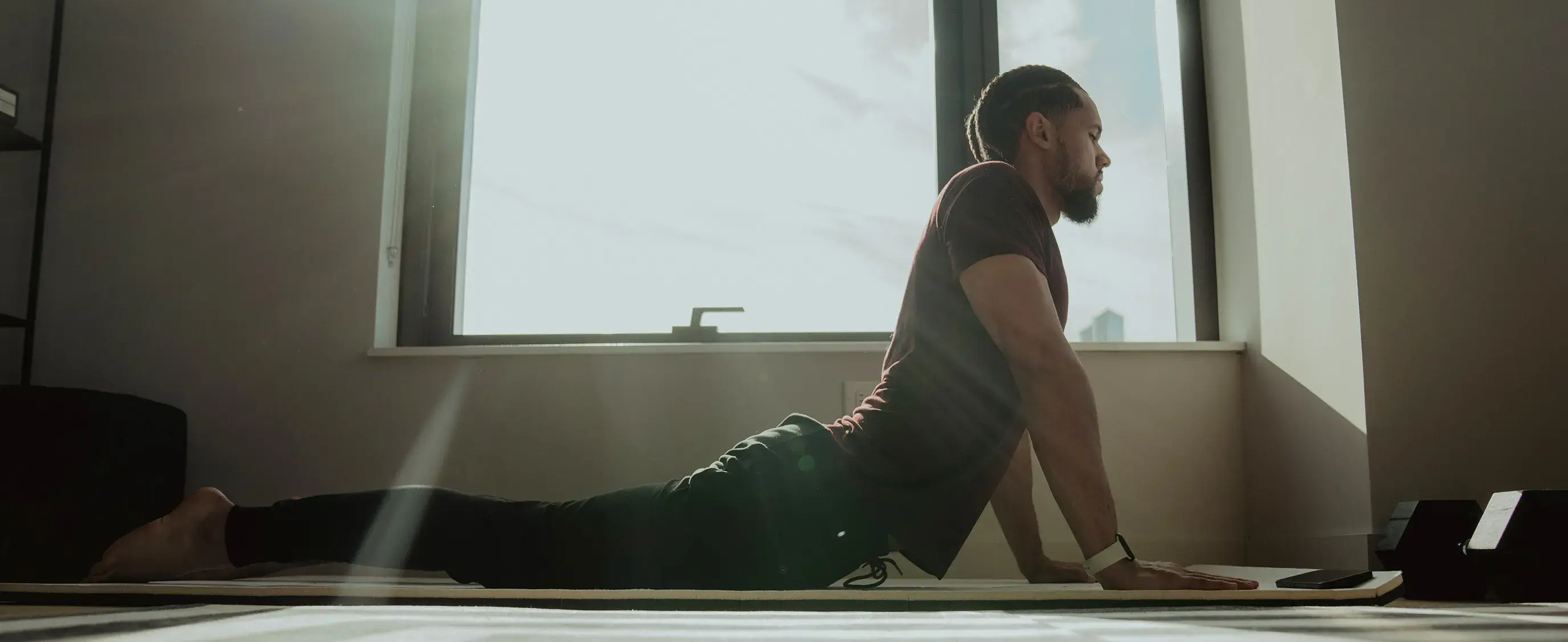Running can be a liberating experience, a way to connect with the rhythm of your body and the world around you. But when the insides of your legs start to hurt, it can quickly turn into a frustrating ordeal. If you've ever wondered, why do the insides of my legs hurt when I run? This common issue can hold you back from enjoying your runs and achieving your fitness goals. In this blog, we'll explore the causes of inner leg pain, how to prevent it, and how to recover quickly from a workout so you can run comfortably and confidently once again.
To help you tackle this issue, the Pliability’s mobility app offers tailored solutions for runners. With its exercises and guidance, you can address and prevent inner leg pain, making your runs more enjoyable and pain-free.
Why Do the Insides of My Legs Hurt When I Run?

Running is a fantastic exercise, but it can sometimes leave you with aches and pains, especially in the legs. Inner leg pain during running can be particularly frustrating, as it interrupts your flow and makes you question what's happening with your body.
While leg pain is common among runners, it’s essential to recognize that not all pain is created equal.
Why Leg Pain is Common Among Runners
Leg pain is often a frequent companion for runners, primarily due to the repetitive nature of the sport. Each step you take is a slight shock to your body, and over time, this can lead to discomfort or even injury.
This doesn’t mean running is bad for you; instead, it highlights the importance of running with good form and listening to your body.
Inner Thigh and Groin Pain
If you’re experiencing pain on the inside of your leg while running, it’s likely coming from the inner thigh or groin area. The hip adductors, or inner thigh muscles, play a significant role in stabilizing your leg as you run.
If these muscles are tight or weak, they can become strained, leading to pain. It’s also possible that a sudden change in activity level or improper form could be causing the discomfort.
Exploring Causes and Solutions
To address this type of pain, start by ensuring you’re warming up properly and stretching your adductors regularly. Strengthening your hip and core muscles can also help by providing better support and stability during your runs.
If the pain persists or worsens, it’s essential to seek the guidance of a healthcare professional who can provide a more targeted plan.
Recognizing and Managing Shin Splints
Pain in the lower legs, particularly around the shins, is often attributed to shin splints. This condition is caused by inflammation in the connective tissue that surrounds the shinbone. It’s a common issue for those who’ve recently increased their running intensity or frequency.
To manage shin splints, rest and allow your body time to heal. Using ice and compression sleeves can help reduce the discomfort. Avoid running on hard surfaces and consider cross-training to keep up your fitness while you recover.
Addressing Muscle Soreness
Muscle soreness is a natural response to physical activity, especially if you’re new to running or have recently increased your intensity. Known as delayed onset muscle soreness (DOMS), this condition can make your legs feel stiff and painful.
While it’s not harmful, it’s a signal that you need to take it easy and allow your muscles to recover.
Understanding Muscle Cramps
Cramps can strike at any time during a run, causing sudden pain and discomfort.
They’re thought to be related to:
- Dehydration
- Electrolyte imbalances
- Fatigue
To prevent cramps, ensure you’re hydrating adequately and consuming a balanced diet.
Identifying Muscle Strains
If you’ve ever “pulled” a muscle, you know how painful it can be. Strains occur when a muscle is overstretched or torn, leading to inflammation and tenderness.
This can happen to any muscle used during running, including the:
- Calves
- Quads
- Groin
Coping with Flat Feet
Flat feet, or fallen arches, can cause leg pain due to the way they affect your running stride. This condition can lead to overpronation, where your foot rolls too far inward, putting extra stress on your leg muscles.
To minimize the impact of flat feet on your running, invest in supportive shoes or orthotics that help stabilize your stride. Strengthening your feet and ankles may also improve your running form.
Dealing with Knee Pain
Knee pain is another common issue for runners, and it can stem from several different causes. Runner’s knee, for example, is characterized by pain around the kneecap, while IT band syndrome leads to pain on the outer side of the knee.
Recognizing Chafing
While not technically an injury, chafing can cause significant discomfort during a run. This irritation occurs when your skin rubs against clothing or other skin, leading to redness and pain.
Identifying Tendonitis
Tendonitis is an overuse injury that affects the tendons, which connect muscles to bones. It’s common in runners, particularly in the Achilles tendon, which is located at the back of the ankle.
Addressing Stress Fractures
Stress fractures are small cracks in the bone that develop from repetitive impact, such as running. They most commonly occur in the foot or lower leg and can cause sharp, localized pain.
Building Endurance
Running requires both physical and mental endurance. If you’re new to the sport, it’s essential to build up your stamina to prevent fatigue and injury gradually.
Related Reading
- Why is a Recovery Period Between Bouts of Exercise Important?
- Signs of Injury
- Hip and Knee Pain
- Deadlift Back Pain
- Signs of Overtraining Cycling
- Deloading Week
- How Do You Know if You Tore Your ACL
- Injuries in Weightlifting
- How to Prevent MCL Injuries
Leg Pain During Running: Know What’s Normal and What’s Not

When you’re out on a run and pain hits, it’s crucial to pay attention. The type, timing, and intensity of the pain can reveal whether you’re dealing with typical soreness or something more concerning. If you experience a sudden, sharp pain that stops you in your tracks, this is not something to push through.
It could indicate:
- A muscle strain
- Stress fracture
- Tendon tear
Press on the area to check for a particular, tender spot. If it still hurts while walking or hours later, you might be dealing with a stress fracture. Ignoring these signs can lead to serious injury, so it's wise to stop early and rest.
Calf Burning: Common Yet Overlooked
Burning calves during a run, especially on hills or speed days, is usually a sign of overuse. It’s not an injury, but a warning. This sensation often means that you’ve jumped into hill work too soon, your form is off, or your calves aren’t strong enough yet. To address it, slow down when the burning hits.
If it fades, great. If it starts messing with your form or comes with sharp twinges, stop.
Work on proper:
- Uphill form
- Calf strength
- Ankle mobility
- Gradual hill progression
Always warm up your calves before challenging them, as cold muscles are more prone to injury.
Hamstring and Glute Tightness
Feeling tightness in your hamstrings or glutes during a run can be a common issue that shouldn’t be ignored. It often creeps in gradually rather than as a sudden injury. Weak or tight hamstrings, poor form, imbalances, and nerve irritation can all contribute to this type of pain. If your hamstring feels like it might tear when you pick up the pace, your mechanics might be off.
If the tightness starts high and shoots downward, it could be nerve-related. Ask yourself if the pain eases up as you warm up. If it gets worse, stop running. Changing your stride to compensate can lead to further issues.
Mid-Run Pain: When to Push Through vs. Call It
We’ve all been there: a few miles in, something starts to hurt. Should you tough it out or stop?
- If you experience sharp, stabbing pain, stop immediately.
- If it’s a dull ache or general soreness, it’s probably safe to continue, but monitor it closely.
- If you feel cramping or burning, reduce the intensity, hydrate, and stretch.
- If it doesn’t resolve, stop before it turns into a strain.
Tingling or numbness requires caution. If it’s nerve pain or spreading tingles, stop and troubleshoot, as it could be related to:
- Form
- Shoes
- A back issue
Post-Run Pain: What’s Normal, What’s Not
After a run, you might experience normal post-run pain, known as DOMS, which is a dull soreness that shows up 12 to 72 hours later.
It usually affects both legs, improves with movement, and is common in areas like the:
- Quads
- Hamstrings
- Calves
To handle DOMS, engage in:
- Gentle movement
- Foam roll
- Stretch
- Prioritize:
- Sleep
- Protein
- Hydration
If the pain is sharp, in a joint, lasts more than 5 days, or if one leg feels significantly worse than the other, it’s a red flag. This isn’t DOMS; it could be an injury that needs attention.
Related Reading
- How to Prevent Peroneal Tendonitis
- Why Do My Knees Hurt After Squats
- How to Prevent Arthritis in Hands
- How to Prevent Achilles Tear
- Ankle Sprain Prevention
- How to Prevent Knee Injuries
- Shoulder Impingement Exercises to Avoid
- Ankle Mobility for Runners
- How to Avoid Rotator Cuff Injury
Tips and Tricks to Prevent Running Injuries

Shin Splints: How to Handle Them Like a Pro
Shin splints are a common complaint among runners, especially when they ramp up their training intensity. The pain usually hits the inner edge of the shinbone, and it's a signal that something’s off. First, cut back on your mileage to give your legs a break.
Try running on softer surfaces, as concrete can exacerbate the issue.
Smart Recovery and Gear Choices for Preventing Shin Splints
After your run, ice your shins for 15–20 minutes to reduce inflammation. If your shoes have over 300 to 400 miles on them, it’s time for a new pair. Consider arch supports or stability shoes if you have flat feet. Strengthening exercises like heel drops, toe taps, and single-leg balance drills can also help prevent shin splints.
Remember, you don’t fix shin splints by pushing through. You fix them by training smarter.
Stress Fractures: The Importance of Rest and Recovery
Stress fractures often occur when a runner ignores the warning signs and continues training on a weakened bone. If you suspect a stress fracture, take at least 6–8 weeks off from running. You might even need crutches or a walking boot to support the bone fully.
Cross-training activities like cycling, pool running, or swimming can help maintain your fitness while you recover. But don’t return to running until a healthcare professional clears you. Skip one week now, or 6 months later: your call.
Understanding Achilles Pain: A Runner’s Nightmare
Achilles pain often strikes without warning, causing discomfort just above the heel. It’s the biggest tendon in your body, and when it’s irritated, it’s hard to ignore. Achilles tendinitis usually causes morning stiffness and flares up after running. Insertional Achilles tendinopathy affects the lower part of the tendon, right where it meets the heel bone.
Supporting and Rebuilding the Foot’s Foundation
Meanwhile, posterior tibial tendonitis (PTT) causes pain on the inner side of the ankle and heel, often leading to arch collapse. To manage these injuries, cut back on your mileage and limit hill running. Ice the area after runs and start doing eccentric heel drops to rebuild the tendon.
Wear supportive shoes with a slight heel lift to reduce stress on the Achilles. If you’re dealing with PTT, arch taping, or orthotics can provide additional support. If swelling, thickening, or morning pain doesn’t improve, see a specialist.
How to Prevent Running Injuries: Protect Your Legs
Preventing running injuries is a lot easier than treating them. Your body is resilient, but it’s not invincible. Pain is often a warning that something is wrong.
Here are some tips to help you stay healthy and injury-free:
- Don’t skip your running warm-ups. They get the blood flowing to your muscles and prepare them for the workout ahead.
- Incorporate cross-training into your routine to build strength and flexibility.
- Cut down on smoking to improve your circulation and reduce the risk of cramps.
- Regular physical check-ups can also help identify potential issues before they become significant problems.
- Work on your breathing technique to improve your aerobic endurance and reduce the risk of leg cramps.
Improve Your Flexibility with Our Mobility App Today | Get 7 Days for Free on Any Platform
Pliability is not your typical yoga app. It's designed for performance-focused individuals and athletes who want to enhance their flexibility and improve recovery. With a vast library of videos,
Pliability offers routines that target:
- Flexibility
- Recovery
- Pain reduction
- Range of motion
The app is updated daily with custom mobility programs to help users optimize their health and fitness. Pliability also features a unique body-scanning tool to identify and address mobility issues.
Whether you're feeling limited by pain or restricted movement, Pliability can complement your existing fitness routine and help you move better. Sign up today to experience the benefits of improved flexibility and recovery for free for 7 days.
Related Reading
- Glute Activation Exercises
- Eccentric Quadriceps Exercises
- How to Squat Without Knee Pain
- Injury Prevention for Runners
- How to Start Working Out Again After Knee Injury
- Signs of Overtraining Running
- Scapular Mobility Exercises
- SI Joint Mobility Exercises
- Running Injury Prevention Exercises
.avif)
.jpg)

.jpg)
.jpg)
.jpg)


